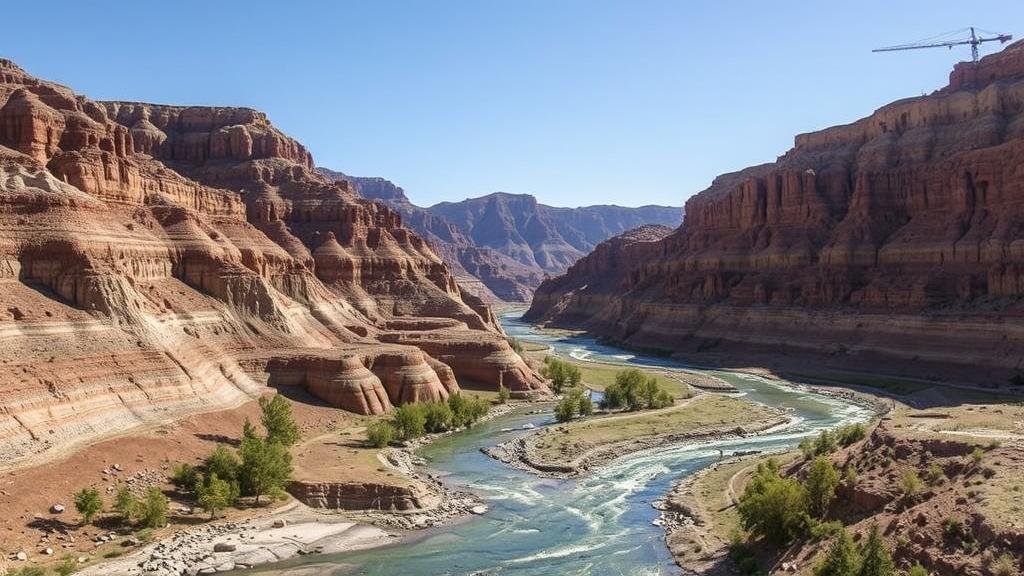How to Locate Gold Deposits in Dry Riverbeds Using Erosion Patterns
How to Locate Gold Deposits in Dry Riverbeds Using Erosion Patterns
Gold prospecting has intrigued many due to its potential for discovery and profit. One of the most effective methods for locating gold deposits is analyzing the erosion patterns of dry riverbeds. This article explores the relationship between erosion and gold deposits, providing insights into techniques and methodologies for successful prospecting.
The Science of Erosion
Erosion is a natural process where soil and rock are worn away due to water flow, wind, and other environmental factors. In dry riverbeds, this process can create distinct patterns that suggest where sediment–and potentially gold–has accumulated. Understanding these patterns is key for prospectors.
- Types of Erosion: There are several types of erosion, such as hydraulic, abrasion, and chemical erosion. Each plays a role in shaping riverbeds and influencing the deposition of materials.
- Significance of Erosion Patterns: Studying the structure of a dry riverbed can reveal where heavier materials, such as gold, may settle as lighter particles are washed away.
Identifying Key Erosion Features
When analyzing dry riverbeds for gold, several features indicate potential deposits:
- Benches and Terraces: Elevated areas alongside riverbeds often indicate periods of lower water flow and may contain concentrically deposited heavy minerals.
- Pools and Pockets: Deep pools or eddies can act as natural catchers for gold, as their current may not be strong enough to displace heavier particles.
- Cut Banks: The outer edges of bends in riverbeds typically exhibit increased erosion and can expose older layers of sediment where gold may reside.
Tools and Techniques for Prospecting
Effective prospecting requires specific tools and techniques to analyze erosion patterns and find gold:
- Panning and Sluicing: These are basic methods that use water to separate gold from other sediments. are effective in areas identified with potential deposits through erosion study.
- Metal Detectors: High-quality metal detectors can help locate gold nuggets directly within or adjacent to dry riverbeds.
- Geological Maps: Studying these maps can provide insights into past geological activities and sediment formations, pointing to where gold deposits may likely be found.
Case Studies: Successful Gold Prospecting
Numerous successful gold locations have resulted from studying erosion patterns. For example, the California Gold Rush of 1849 was fueled primarily by prospectors who identified gold-rich streams and rivers, utilizing erosion patterns to hone in on high-yield areas.
Another modern-day example includes the gold discovery in the Pilbara region of Western Australia, where prospectors noted unique erosion patterns indicative of ancient creek beds. This led to significant gold finds through strategic sleuthing.
Challenges and Considerations
While the process of locating gold through erosion patterns is promising, several challenges exist:
- Environmental Laws: Always ensure compliance with local laws and regulations regarding prospecting to avoid legal issues.
- Seasonal Changes: Conditions can vary significantly with seasonal weather changes, affecting the visibility of erosion patterns.
- Knowledge Level: Prospection requires some geological knowledge; consulting with experts can improve success rates.
Conclusion and Actionable Takeaways
Locating gold in dry riverbeds using erosion patterns is an art that combines geological understanding with practical prospecting techniques. By identifying significant features, employing the right tools, and studying historical case studies, prospectors can enhance their chances of a successful find. Remember to consider environmental factors and abide by local laws for the best prospecting experience.
In summary, you can improve your gold prospecting efforts by:
- Studying erosion patterns to identify key geological features.
- Utilizing effective tools such as pans, sluices, and metal detectors.
- Researching past successful sites to draw insights.



